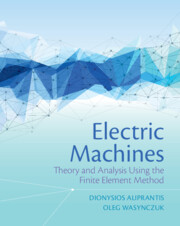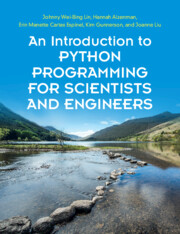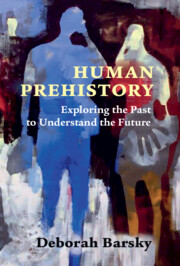Refine search
Actions for selected content:
36881 results in Cambridge Textbooks
1 - Europe in the world of 1450
- from Part I
-
- Book:
- Early Modern Europe, 1450–1789
- Published online:
- 30 August 2022
- Print publication:
- 25 August 2022, pp 21-54
-
- Chapter
- Export citation
Part I
-
- Book:
- Early Modern Europe, 1450–1789
- Published online:
- 30 August 2022
- Print publication:
- 25 August 2022, pp 19-296
-
- Chapter
- Export citation
5 - Religious reform and consolidation, 1450–1600
- from Part I
-
- Book:
- Early Modern Europe, 1450–1789
- Published online:
- 30 August 2022
- Print publication:
- 25 August 2022, pp 171-210
-
- Chapter
- Export citation
Contents
-
- Book:
- Early Modern Europe, 1450–1789
- Published online:
- 30 August 2022
- Print publication:
- 25 August 2022, pp v-x
-
- Chapter
- Export citation
Index
-
- Book:
- Early Modern Europe, 1450–1789
- Published online:
- 30 August 2022
- Print publication:
- 25 August 2022, pp 567-574
-
- Chapter
- Export citation
Introduction
-
- Book:
- Early Modern Europe, 1450–1789
- Published online:
- 30 August 2022
- Print publication:
- 25 August 2022, pp 1-18
-
- Chapter
- Export citation
Acknowledgments
-
- Book:
- Early Modern Europe, 1450–1789
- Published online:
- 30 August 2022
- Print publication:
- 25 August 2022, pp xviii-xx
-
- Chapter
- Export citation
7 - Europe in the world, 1450–1600
- from Part I
-
- Book:
- Early Modern Europe, 1450–1789
- Published online:
- 30 August 2022
- Print publication:
- 25 August 2022, pp 250-296
-
- Chapter
- Export citation
Illustrations
-
- Book:
- Early Modern Europe, 1450–1789
- Published online:
- 30 August 2022
- Print publication:
- 25 August 2022, pp xi-xiii
-
- Chapter
- Export citation
Maps
-
- Book:
- Early Modern Europe, 1450–1789
- Published online:
- 30 August 2022
- Print publication:
- 25 August 2022, pp xv-xv
-
- Chapter
- Export citation
2 - Individuals in society, 1450–1600
- from Part I
-
- Book:
- Early Modern Europe, 1450–1789
- Published online:
- 30 August 2022
- Print publication:
- 25 August 2022, pp 55-92
-
- Chapter
- Export citation

Electric Machines
- Theory and Analysis Using the Finite Element Method
-
- Published online:
- 24 August 2022
- Print publication:
- 11 August 2022
-
- Textbook
- Export citation

An Introduction to Python Programming for Scientists and Engineers
-
- Published online:
- 20 August 2022
- Print publication:
- 07 July 2022
-
- Textbook
- Export citation

Human Prehistory
- Exploring the Past to Understand the Future
-
- Published online:
- 20 August 2022
- Print publication:
- 18 August 2022
-
- Textbook
- Export citation
Part III - Generative Models
-
- Book:
- The Science of Deep Learning
- Published online:
- 23 September 2022
- Print publication:
- 18 August 2022, pp 151-152
-
- Chapter
- Export citation
Matrix Calculus
-
- Book:
- The Science of Deep Learning
- Published online:
- 23 September 2022
- Print publication:
- 18 August 2022, pp 293-295
-
- Chapter
- Export citation
Preface
-
- Book:
- The Science of Deep Learning
- Published online:
- 23 September 2022
- Print publication:
- 18 August 2022, pp xv-xvi
-
- Chapter
- Export citation
Notes
-
- Book:
- Human Prehistory
- Published online:
- 20 August 2022
- Print publication:
- 18 August 2022, pp 207-219
-
- Chapter
- Export citation
5 - The Ascent of Paleolithic Cultures
-
- Book:
- Human Prehistory
- Published online:
- 20 August 2022
- Print publication:
- 18 August 2022, pp 84-100
-
- Chapter
- Export citation
Part IV - Reinforcement Learning
-
- Book:
- The Science of Deep Learning
- Published online:
- 23 September 2022
- Print publication:
- 18 August 2022, pp 191-192
-
- Chapter
- Export citation
